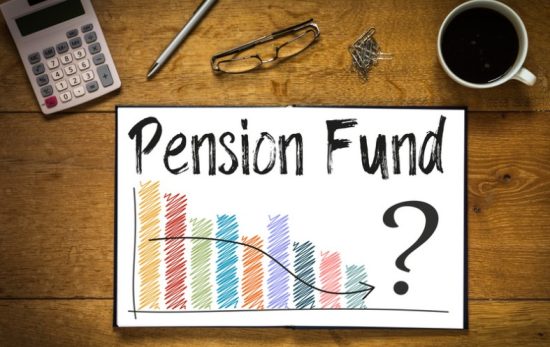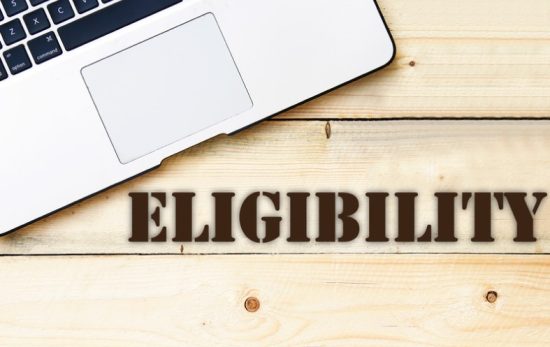Are you approaching retirement age and wondering about the financial implications of receiving Old Age Security (OAS) benefits? You’re not alone! OAS is a government program that provides income support to Canadian seniors, but many people are unsure if these payments are taxable or not. In this blog post, we’ll dive into the details and clarify whether OAS is indeed taxable. So, if you’re ready to unravel the mysteries surrounding OAS taxation, keep reading to find out everything you need to know!
What is OAS?

OAS, or Old Age Security, is a government pension program designed to provide financial support to Canadian seniors. It is one of the pillars of Canada’s retirement income system, along with the Canada Pension Plan (CPP) and personal savings.
The OAS benefits are paid every month to individuals who meet certain eligibility criteria. How long you have been in Canada after turning 18 affects the amount you receive. The maximum monthly payment for OAS is adjusted quarterly based on inflation rates.
Unlike CPP, which requires contributions from your employment income throughout your working years, OAS does not require any specific contributions. It’s available to all Canadian citizens and legal residents who have resided in the country for at least 10 years since turning 18.
Benefits of OAS
The Old Age Security (OAS) program in Canada provides a range of benefits to eligible individuals. One of the main advantages is financial support during retirement, which can help seniors maintain their standard of living and cover essential expenses.
For many retirees, OAS acts as a vital source of income that supplements other retirement savings or pensions they may receive. It serves as a reliable foundation for their financial security and helps ensure a comfortable lifestyle in their golden years.
In addition to providing monetary assistance, OAS also offers various benefits such as access to healthcare services and discounts on prescription medications through the Ontario Drug Benefit Program. This can significantly reduce out-of-pocket costs for seniors who often require regular medical care.
Moreover, receiving OAS has non-financial perks too. It gives retirees peace of mind knowing that they have government support after contributing to society throughout their working lives. The program acknowledges the valuable contributions made by seniors and aims to provide them with adequate resources in return.
The benefits provided by OAS play an essential role in supporting Canadian seniors’ well-being during retirement. By ensuring financial stability and access to necessary services, this program contributes positively towards enhancing the quality of life for older adults across the country
Who is Eligible for OAS?

The Old Age Security (OAS) program is a financial support system provided by the Canadian government to individuals who have reached a certain age and meet specific criteria. The eligibility requirements for OAS are relatively straightforward.
You must be 65 years of age or older to qualify for OAS benefits. However, there are exceptions to this rule. If you were born on or before July 1, 1952, you can start receiving benefits as early as age 64. On the other hand, if you were born after January 1, 1958, your eligibility age will gradually increase to reach 67 by January 2029.
To receive full OAS benefits, you need to have resided in Canada for at least ten years after turning eighteen. This residency requirement ensures that individuals who have contributed to and lived in Canada can benefit from this program.
It’s important to note that even if you don’t meet the residency requirement mentioned above, you may still be eligible for partial OAS benefits based on your residence history in another country with which Canada has a social security agreement.
By meeting these criteria and providing the necessary documentation during the application process, you can determine whether or not you qualify for Old Age Security benefits.
How To Apply for the OAS?
Applying for the Old Age Security (OAS) benefit is a relatively straightforward process. To ensure you receive this valuable support, it’s important to understand how to apply it correctly.
- Determine your eligibility for OAS by checking if you meet the age and residency requirements. You must be at least 65 years old and have lived in Canada for at least 10 years after turning 18.
- Next, Acquire all the necessary documents before starting the application process. This includes your Social Insurance Number (SIN), proof of birth or citizenship, and any relevant immigration or residency documents if applicable.
- Once you have everything ready, there are three ways to apply for OAS: online through Service Canada’s website, by phone using their toll-free number, or by mail with a completed application form sent to the nearest Service Canada office.
- When applying online or by phone, make sure to have all required information readily available. It’s crucial to provide accurate details about your income and assets as these factors can affect your entitlements.
- After submitting your application, expect a confirmation notice from Service Canada within several weeks. The processing time may vary depending on various factors such as workload and completeness of documentation.
- Remember that applying early is key – delaying your application could result in delayed payments. So don’t wait until you turn 65; begin the process approximately six months beforehand to ensure a smooth transition into receiving OAS benefits when eligible!
Is OAS Taxable?

Is OAS taxable? This is a common question for many Canadians who rely on the Old Age Security (OAS) program in their retirement years. The answer is yes, OAS is indeed considered taxable income.
When you receive your OAS benefits, they are subject to federal income tax. However, it’s important to note that only a portion of your OAS may be subject to taxation. The exact amount depends on your overall income level and whether you qualify for any additional government benefits or credits.
The amount of tax you pay on your OAS benefits will vary depending on various factors such as your total income from all sources, including pensions, investments, and employment earnings. It’s essential to consult with a tax professional or use online resources like the Canada Revenue Agency’s Tax Calculator to determine how much tax you may owe.
While it might seem frustrating that part of your OAS benefits are taxed, it’s crucial to remember that this program provides valuable financial support during retirement. Plus, paying taxes means contributing back into the system so others can benefit as well.
While the Old Age Security (OAS) program provides essential support for Canadian retirees, it is indeed taxable income. Understanding how much tax you may owe on your OAS benefits requires careful consideration of your overall income and consulting with experts if needed
OAS Clawback
OAS Clawback is an important consideration for those receiving Old Age Security (OAS) benefits in Canada. The clawback refers to a reduction in OAS payments that occurs when an individual’s annual income exceeds a certain threshold.
The purpose of the clawback is to ensure that higher-income individuals do not receive as much OAS support as those with lower incomes. For the 2021 tax year, the threshold for the clawback is set at $79,845. If your income exceeds this amount, you may be subject to a reduction in your monthly OAS payments.
The clawback operates on a sliding scale and is calculated based on your net income. It’s important to note that not all types of income are included in the calculation for the clawback. Certain pension benefits and withdrawals from tax-free savings accounts are excluded from this calculation.
To navigate the complexities of OAS Clawback and ensure you understand how it may affect your financial situation, consulting with a qualified tax professional or financial advisor can be beneficial. They can help you optimize your retirement strategy and minimize any potential impact from the clawback provision.
How Much Tax Do I Pay on OAS?

The amount of tax you pay on your OAS depends on your overall income and tax bracket.
The OAS benefit is considered taxable income, which means that it will be included in your annual income tax return. However, not all of the OAS amount will necessarily be subject to taxation.
The government uses a formula to calculate how much of your OAS benefit should be clawed back based on your net income. For every dollar above the minimum threshold, 15% of your OAS benefit will be reduced or “clawed back.” This reduction continues until you reach the maximum threshold where no OAS benefits are received.
To determine how much tax you may have to pay on your OAS, it’s important to consider any other sources of income you may have, such as pensions or investment earnings. Your total taxable income will ultimately determine which tax bracket you fall into and how much tax you owe.
Conclusion
OAS is taxable, but it doesn’t have to be a burden. With the right planning, you can ensure that your retirement income will still provide for the lifestyle you want while minimizing taxes and other costs. By taking advantage of all available tax credits and deductions, as well as understanding how OAS taxation works, you can maximize your savings and ensure that your hard-earned income goes further in retirement.
FAQs on is OAS Taxable
1. Do I pay income tax on CPP and OAS?
Your CPP retirement pension is taxable as income. Taxes are not always taken out. You can log onto your My Service Canada Account to request that federal income tax be deducted from your monthly payments, or.
2. Is it worth contributing to CPP after 65?
If you are between the ages of 65 and 70 and still employed, you can decide whether to continue making payments. You will receive more CPP each month until you die away if you decide to keep making contributions. The CPP Post-Retirement Benefit (PRB) is to thank for this.
3. How much tax is paid on OAS?
Your monthly Old Age Security payments will be reduced by a non-resident tax if you reside outside of Canada and are not regarded as a Canadian resident for income tax reasons. In the absence of a tax treaty between Canada and your country of residence, the tax rate is 25%.










